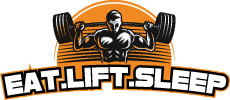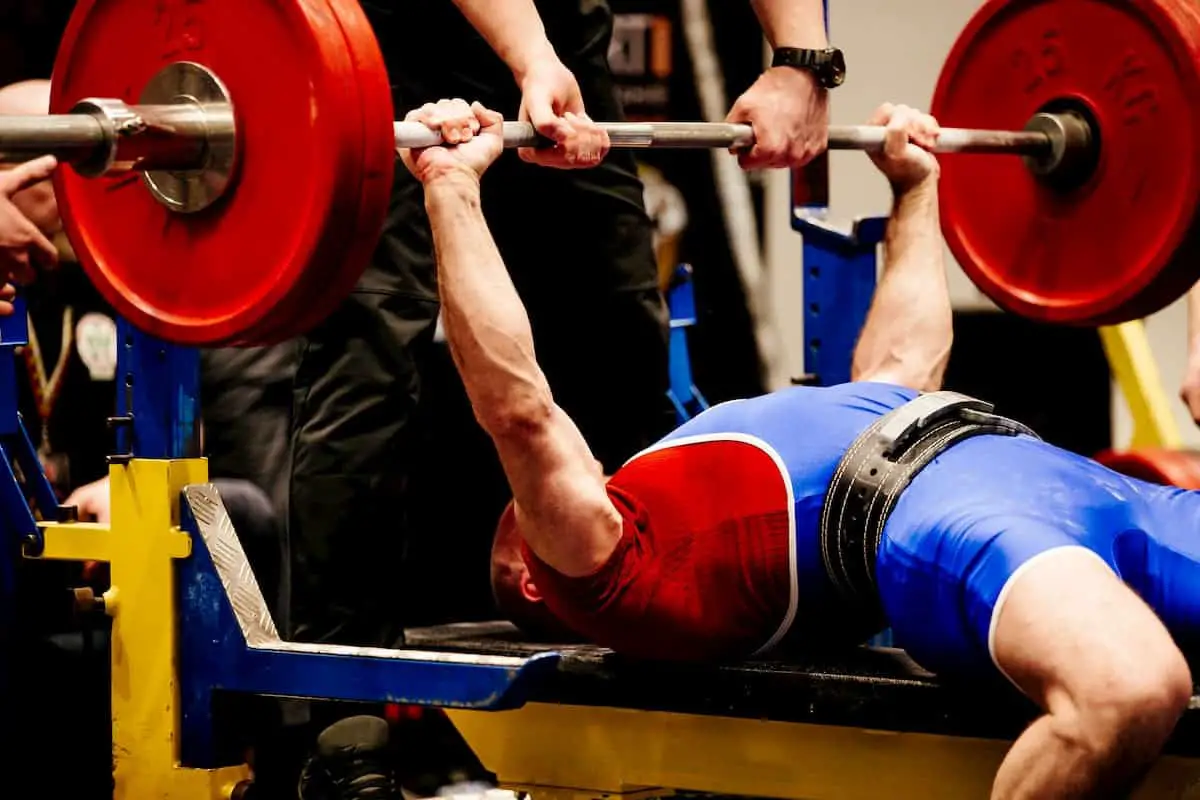Weight lifting is a challenging sport and has become more popular than ever since the 21st century. Weight training is incredibly beneficial for increasing the strength of your skeletal muscles. Weight training uses the force of gravity as resistance then trains your muscles to oppose it, so then what does PR mean in lifting?
PR or “Personal records” are a great way to measure how much strength you have for the different exercises within weight lifting. When we’re constantly challenging ourselves and pushing beyond our limits, that’s when people see their greatest gains in fitness!
The domain of weight training is saturated with many professional terms. In this article, we shall discuss PR in depth. So, lets dive deeper into PR and more slang within the weightlifting arena to help you feel more comfortable listening and understanding conversations.
Why PR?
PR can have multiple reasons for its popularity in weight lifting. Powerlifting is mainly through sport, and the amount of weight one lifts does matter a lot. If you’re looking to compete on a contest standard, PR can be a great way to record what amount of weight you can lift for a particular exercise.
The standard may vary from lifters of the higher weight class to those of lower weight class. For example, you might be able to lift 300lbs on the bench press.
However, not everyone necessarily has to be in a contest to keep track of the maximum weight they can lift. One might as well keep a PR to motivate oneself, as they devote themselves to surpass their former PR.
Many people use PR as a standard set by them for motivation. With cardio and normal weight lifting, one can also increment their strength by challenging themselves to lift a particular weight.
Being able to lift a specific amount of weight is the most visible showcase of power.

PR Strength Standards and Tables for Competition
Let’s first talk about the strength standards in their relevance to contests. So, what are the criteria? And who sets them? Well, strength standards are the amount of weight one can lift according to one’s body weight and sex.
You might have noticed that you will run into various conflicting charts that don’t agree to one another upon a google search about these strength standards.
The reason for that is because that particular organization or the website arbitrarily sets these standards. They are proportional to one’s body weight and sex, meaning that you should be able to lift a particular multiple of your body weight.
Powerlifting organizations create strength standards so they can rank their contestants.
In this scenario, PR would denote how much you can lift in a massive exercise such as squats, bench workouts, and deadlifts. These exercises are an excellent way to record your overall body strength.
In contests, judges and referees play their part in making sure that the lifts and squats are done legitimately, and someone doesn’t get injured while doing them.
There are different categories in strength charts. For example; If we talk about the charts given by USAPL (United States Of America Power Lifting), there are the elite, master, and other classes ranging from 1 to 5 in charts.
The elite class is 2.5%, which means that an elite powerlifter is ranked higher than the remaining 97.5% of contestants. The total is determined by adding up the performance in squats, bench exercises, and deadlifts.
For Your Motivation
Strength standards can also be very misleading when you get to the nuts and bolts of it. You see, these strength charts have data that is extracted from powerlifters who are primarily motivated by the sport. If you happen to seek competition, then, by all means, adhere to them.
But, if you are a bodybuilder who wants to have a good physique and wants to stay in good shape by improving your abilities in various spheres, then the strength chart might not be that helpful because the powerlifters specifically train to perform better during deadlifts, benches, and squats.
Compare this to your gym workouts, which are much more diverse from anything like skull crusher to a military press. While the charts have data related to squats, deadlifts, and benches, they don’t have data on other workouts that you do during your workout sessions.
Furthermore, people who take part in powerlifting competition are also many times genetic freaks, and sometimes take steroids and various hormones to bolster their powerlifting performance.
To be fair, these organizations have a rigid drug test method, but other legal materials can also be taken to perform better.
The motivation to win competitions and the means in doing so might not be that helpful to you who might just want to remain fit and healthy. You can set a better PR by communicating with your gym fellows and talking to your trainers.
Since your motivation is to focus on yourself instead of winning a powerlifting competition, you can kickstart your record by first taking baby steps and keeping a low pace before you move on to heavier weight lifting.
Collect your data from your fellow lifters, watch their record, and set your powerlifting goals. Some trainers tend to have unofficial records for other exercises such as barbell rows, military presses, and skull crushers.
4 Must-Know Benefits of Doing Powerlifting
Heavy weightlifting such as squats, benches, and deadlifts all come under the umbrella term of powerlifting. In this section, we shall look at what are the benefits of powerlifting.
1. Improves the Health of Your Skeletal Muscles
Powerlifting helps to increment your bone density. Bone density or bone mineral density refers to the number of bone minerals a bone has. A low amount of bone density can lead to a fatal disease such as osteoporosis, which further increases the risk of injuries.
Along with taking adequate amounts of nutrition, you can improve your bone density by doing powerlifting.
With an increased bone density, your skeletal muscles become much more substantial and allow you to perform challenging tasks effortlessly, with that it also improves your physical health. With an increased bone density, you lower your risk of receiving an injury.
2. Increased Fatloss
As long as one is taking an adequate amount of pre and post-workout meals, it’s guaranteed that powerlifting can help you lose a lot of weight and fat.
Powerlifting is a high-intensity muscle training that allows you to burn many calories as you oppose the resistance with your muscles put on you by the force of gravity.
3. Improves Your Strength
Squats, benches, and deadlifts all contribute to the overall strength of your body. All these exercises demand focus and substantial engagement of muscles to perform.
By setting a PR, you challenge yourself to reach the desired maximum weight. In doing so, you achieve progress by reaching your ultimate weight goals.
Powerlifting has been highly effective in increasing the strength of lifters, and you can check the increment in your strength by comparing your current PR with the former one.
With these exercises, the main components of your larger muscles, such as back, leg, and core, are targeted, and you develop enormous strength in those areas.
4. Improves Posture
Balanced growth in larger muscles is key to a good posture. Correct performance of deadlifts and squats engages with your muscles and lengthens them on the hip flexors and thighs, which helps you improve your posture.
PR Vs. 1RM
1RM is an abbreviation for 1 Rep Maximum, which refers to the maximum weight you can lift within an inevitable repetition of a given exercise. The difference between a PR and 1RM is that a PR is a single heavy-lift, while 1RM is the heavy lifts you perform within a set. 1RM and PR usually go hand in hand.
They both are a great way to determine where an athlete stands. They both help you in improving your strength and are considered traditional markers of growth.
How to Calculate Your 1RM?
Calculating your 1RM is not that hard; you just need to keep in mind what amount of weight you can lift for how many reps. Let’s say that you can do ten reps with 300lbs for bench press.
Then various RM calculators on the internet will tell you that on your 100%, you will be able to lift 400, which will be your 1RM for bench press.
There are various other percentages as well to guide you. Keeping a check on your 1RM can help you take part in a program or just get to know yourself.
How Often Should You Do PR?
It’s not helpful to perform a PR every week, while you can do a 1RM more frequently, such as every one or two weeks.
The reason is that when doing 1RM, you pick a weight which allows you to perform a given number of reps, contrast this to PR where you go for the heaviest weight you can lift for a single heavy lift.
It’s better to provide a longer gap, such as 6-8 weeks between each PR, so you can give your body time to rest and replenish the strength.
How does understanding PR and 1RM numbers help in determining the appropriate barbell weight for fitness?
Understanding PR (personal record) and 1RM (one-rep max) numbers is crucial in determining the appropriate barbell weight for fitness. By knowing your limits, you can adjust the intensity of your workouts, ensuring safety while challenging your muscles. Utilizing these barbell weight and fitness facts empowers you to make informed decisions and prevent overexertion or injury.
Final Thoughts on What Does PR Mean in Lifting
If you are working out and lifting frequently it would be good for you to track your progress through keeping personal records, this way you can track progress with an easy to manage figure on each exercise.
There is no reason to avoid doing a shot at personal records when attempting your 1RM every so often, I wouldn’t suggest that each day, or each week should be when you do it.
Tired of No Gym Equipment? Get started with Rogue Fitness Today!
My wife and I found Rogue Fitness for home workout setups and have been amazed at the quality and overall craftsmanship. With the current stay-at-home issues over the virus having a personal gym has become much more of my focus.
Purchasing the Rogue Fitness gear has allowed me and my wife to work out on a timetable that fits us. Also, this allows me to skip the gym as I always feel like people are staring and I am self-conscious of how I look still.
I can’t recommend them highly enough, they aren’t the most inexpensive but compared to a monthly charge for a gym membership you do start to become profitable over time by saving the monthly expense.




